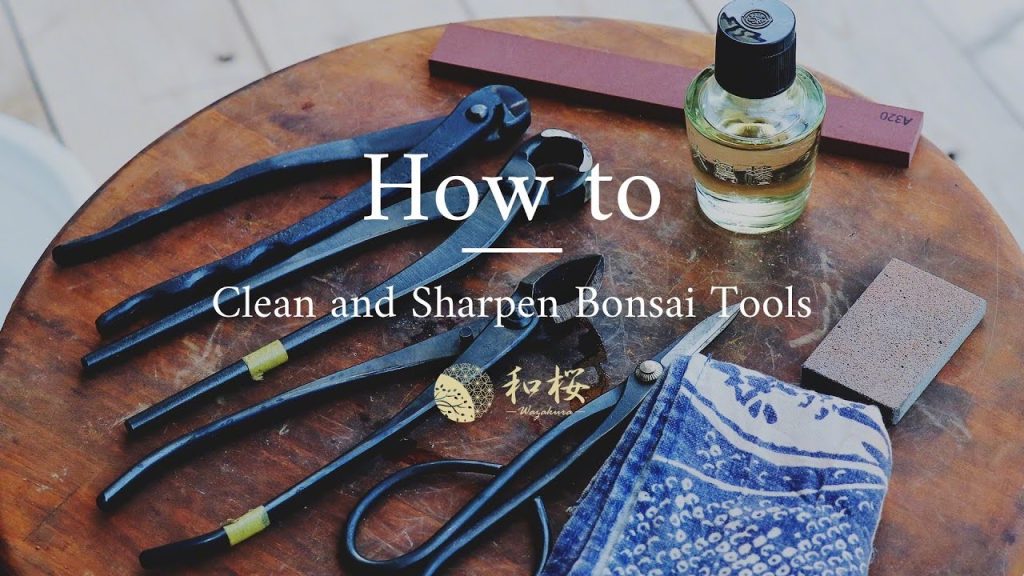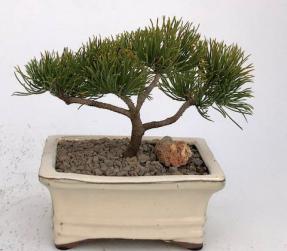How Do I Maintain Bonsai Scissors?
To maintain bonsai scissors, clean the blades after each use and store them in a dry place. Bonsai scissors are an essential tool for bonsai enthusiasts, allowing them to shape and maintain their miniature trees with precision.
However, ensuring that your bonsai scissors remain in optimal condition requires proper care and maintenance. Cleaning the blades of the scissors after each use helps prevent the accumulation of dirt and sap, which can lead to rusting and reduced cutting efficiency. Then, storing the scissors in a dry place minimizes the risk of moisture damage.
The Different Parts Of Bonsai Scissors
When it comes to maintaining bonsai scissors, it’s important to have a good understanding of the different parts that make up these tools. Bonsai scissors are specially designed for precision pruning and shaping of bonsai trees. Each component plays a crucial role in ensuring their functionality and longevity.
Blades:
The blades are the most crucial part of bonsai scissors. They are typically made of high-quality carbon steel to ensure sharpness and durability.
The blades come in two types: concave and straight. The concave blades have a curved shape, which allows for precise cutting close to the trunk or branches, while the straight blades are ideal for general pruning tasks.
It is important to keep the blades clean and sharp to maintain their efficiency. Regular cleaning with a soft cloth and occasional sharpening will keep them in optimal condition.
Handles:
The handles provide the grip and control needed for precise pruning actions. Bonsai scissors usually have comfortable and ergonomic handles made of wood or metal.
Wood handles have a traditional feel and are lightweight, while metal handles offer additional strength. It is essential to keep the handles clean and free from dirt or sap buildup.
Wiping them with a damp cloth after each use will prevent any build-up that could affect their functionality.
Pivot:
The pivot is the point where the blades connect to the handles, allowing for smooth movement and precise cutting action. It is crucial to keep the pivot area free from dirt or debris to ensure easy operation.
A light application of lubricant, such as oil or silicone spray, on the pivot occasionally will help maintain its smooth movement.
Spring:
Some bonsai scissors are equipped with a spring between the handles to assist in the opening of the blades after each cut. This spring helps reduce hand fatigue during prolonged pruning sessions.
If your bonsai scissors have a spring, it is important to check its condition regularly. Ensure it is properly attached and functioning smoothly. Any signs of wear or damage should prompt you to replace the spring with a new one.
How To Ensure Optimal Cutting Performance With Bonsai Scissors?
When it comes to maintaining bonsai scissors, proper care and maintenance are essential to ensure their optimal cutting performance. Regular upkeep of the blades, removing resin and sap, and lubricating the pivot are key steps in maintaining the functionality and longevity of your bonsai scissors.
Blunt blades can hinder the precision and effectiveness of your bonsai scissors. To keep them sharp:
- Use a fine-grit whetstone or sharpening tool to carefully sharpen the blades.
- Hold the scissors at a suitable angle, typically around 20 degrees, and make gentle, controlled strokes along the cutting edges.
- Avoid putting excessive pressure on the blades to prevent any damage.
Regular sharpening will ensure that your bonsai scissors slice through branches and foliage effortlessly, allowing for clean and precise cuts.
Removing Resin And Sap
Resin and sap tend to accumulate on the blades over time, which can affect their cutting performance. Here’s how to remove them:
- Apply a small amount of rubbing alcohol or specialized resin remover to a clean cloth.
- Gently wipe the blades, making sure to remove all traces of resin and sap.
- Rinse the scissors with water and dry them thoroughly to prevent any corrosion.
Regular maintenance of your bonsai scissors by removing resin and sap will help maintain their cutting efficiency, preventing any sticky residue from slowing you down.
The pivot point of bonsai scissors plays a crucial role in their smooth operation. Proper lubrication of the pivot will help maintain their functionality and extend their lifespan. Follow these steps:
- Choose a specialized lubricant suitable for bonsai scissors.
- Apply a small amount of lubricant to the pivot area.
- Gently open and close the scissors to distribute the lubricant evenly.
- Wipe off any excess lubricant with a clean cloth.
Regular pivot lubrication will ensure that your bonsai scissors continue to operate smoothly, reducing friction and allowing for precise cuts.
How to Prevent the Spread Of Disease?
It is important to note that regular cleaning alone may not be enough to eliminate harmful pathogens. Therefore, disinfecting the blades is essential. To disinfect your bonsai scissors, prepare a solution of 70% isopropyl alcohol.
Submerge the blades in the alcohol for approximately 5 minutes to allow the solution to kill any remaining pathogens. After disinfecting, rinse the blades with clean water and dry them thoroughly.

Credit: www.youtube.com
Cleaning The Blades
When it comes to maintaining your bonsai scissors, one important aspect to consider is cleaning the blades. Regular cleaning ensures the longevity and effectiveness of your scissors, allowing them to continue to provide clean and precise cuts.
Removing Debris
Before moving on to any other cleaning method, it is essential to remove any debris from the blades of your bonsai scissors. This can include dirt, plant residue, or any other material that may have accumulated during use.
Use a soft cloth or brush to gently wipe away the debris. Make sure to avoid using a harsh or abrasive material that could damage the blades or cause them to become dull.
Soaking In Warm Water
Soaking the blades of your bonsai scissors in warm water is another effective way to clean them. Fill a container with warm water, making sure it is deep enough to fully submerge the blades.
Be careful not to immerse the entire tool in the water, as this can damage the handle. Place the scissors in the water and let them soak for a few minutes, allowing any remaining debris or residue to loosen.
Using Detergent
After soaking the blades in warm water, you can use a mild detergent to remove stubborn dirt or residue. Make sure to use a detergent that is specifically formulated for cleaning tools and avoid using abrasive cleaners or bleach which may damage the blades.
Apply a small amount of detergent to a soft cloth or brush and gently scrub the blades, paying close attention to hard-to-reach areas. Rinse the scissors thoroughly with water to remove any remaining detergent.
Once you have cleaned the blades, ensure that they are completely dry before storing them. This can be done by gently patting them dry with a soft cloth or allowing them to air dry naturally.
Additionally, applying a thin layer of oil to the blades after cleaning helps prevent rust and maintain their sharpness.
Sharpening The Blades
One of the most crucial aspects of maintaining bonsai scissors is regularly sharpening the blades. Keeping the blades sharp ensures clean and precise cuts, allowing your bonsai tree to heal quickly and maintain its overall health. In this section, we will discuss two essential steps in sharpening bonsai scissors: honing the edges and using a whetstone.
Honing The Edges
Honing the edges helps remove any minor imperfections and burrs, making the blades smooth and sharp. Here are the steps to effectively hone your bonsai scissors:
- Start by cleaning the blades with a soft cloth to remove any dirt or debris.
- Hold the scissors at a comfortable angle, ensuring the blades are facing away from you.
- Using a honing tool, such as a honing stone or diamond file, gently rub the blades against the tool’s surface. Make sure to maintain a consistent angle throughout the process.
- Repeat this process several times until you achieve a smooth and polished edge on both blades.
- Finally, wipe away any residue from the honing process using a clean cloth.
Using A Whetstone
Using a whetstone is an effective method for sharpening bonsai scissors, providing a more precise and refined edge. Here’s how you can use a whetstone to sharpen your scissors:
- Before starting, soak the whetstone in water for a few minutes to ensure it’s adequately lubricated.
- Hold the scissors at the same angle as when honing the edges.
- Place the edge of the blade on the whetstone, ensuring the entire edge makes contact with the stone.
- Using moderate pressure, move the blade back and forth across the stone in a slicing motion. Maintain a consistent angle and make sure to cover the entire length of the blade.
- Continue this process, periodically checking the sharpness and adjusting the angle if necessary. Repeat on the opposite side of the blade.
- Once you achieve the desired sharpness, rinse the scissors with water and dry them thoroughly.
Lubricating The Pivot
To maintain bonsai scissors, you should regularly lubricate the pivot. This will keep the scissors operating smoothly, prevent rust, and prolong the lifespan of the scissors. To lubricate the pivot, apply a small amount of lubricant to the pivot point and move the blades back and forth to distribute the lubricant.

Frequently Asked Questions
What Oil Do You Use For Bonsai Tools?
Using a light mineral oil to lubricate and protect your bonsai tools is a great way to keep them in good condition. The oil will help to prevent rust and keep the tools from drying out and becoming brittle. It is important to apply the oil regularly, especially if you live in a dry climate. You can apply the oil with a soft cloth or brush, and be sure to wipe off any excess oil.
What Is Special About Bonsai Scissors?
Bonsai scissors are special due to their fine and sharp blades, allowing precise cuts for maintaining bonsai trees. Their ergonomic design offers a comfortable grip for prolonged use. The compact size makes them ideal for intricate pruning and shaping tasks.
Can You Use Normal Scissors For Bonsai?
Normal scissors can be used for bonsai, as long as they are sharp and clean. However, it is recommended to use bonsai scissors for better precision and to avoid causing damage to the tree.
Conclusion
Taking proper care of your bonsai scissors is essential for maintaining their longevity and effectiveness. By following a few simple steps, such as cleaning them regularly, keeping them sharp, and storing them properly, you can ensure that your bonsai scissors will continue to serve you well for years to come.

